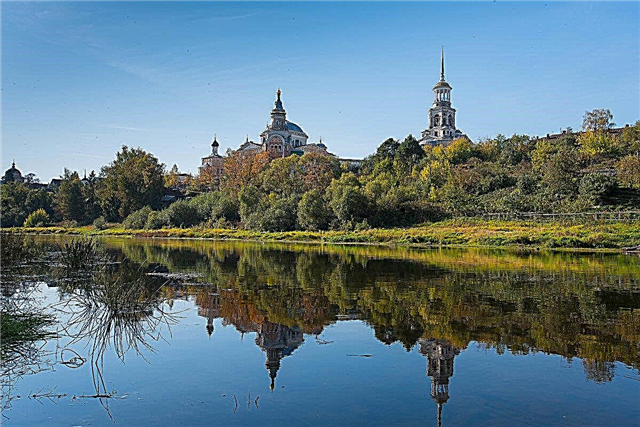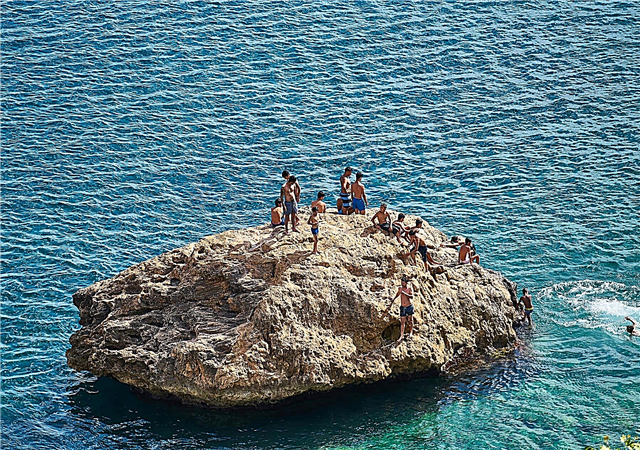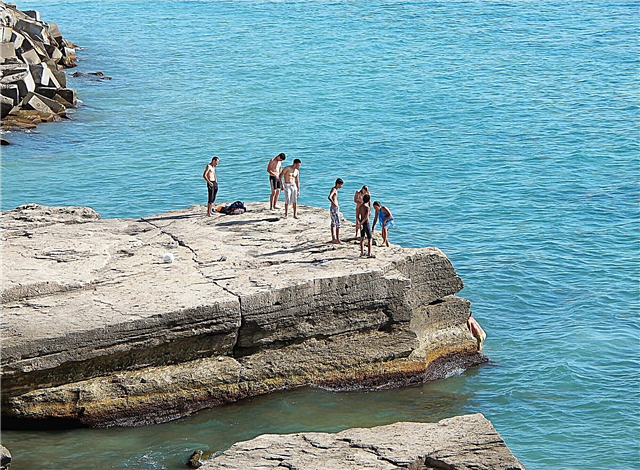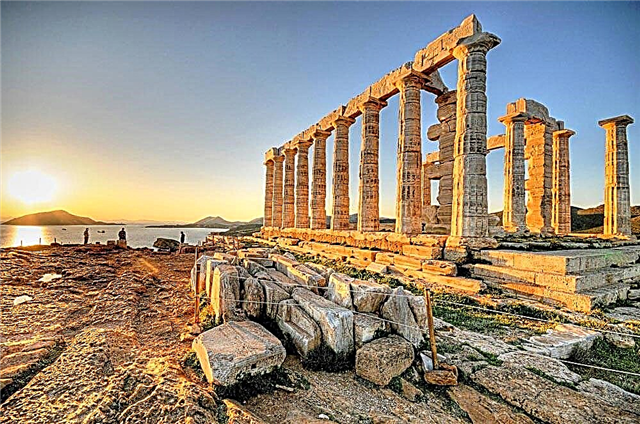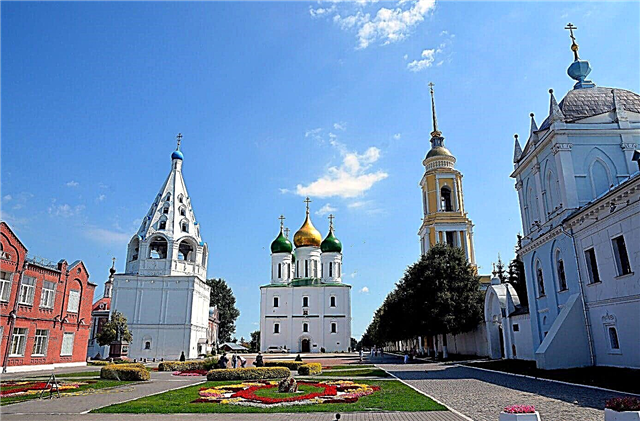Those who want to feel the atmosphere of antiquity should come to Kolomna. The city with 900 years of history has preserved many architectural and cultural monuments - the Kremlin, merchant mansions, the historic Cathedral Square. Not only pilgrims, but also many travelers are attracted by ancient temples and monasteries. The walls of many of them remember visits to historical figures - Dmitry Donskoy, Ivan the Terrible.
Kolomna is also interesting in museum life. The city has both a traditional museum of local lore and museums with unusual themes. The Samovar Museum and the Flax Museum, the Tram Museum and the Gramophone Museum - you can spend more than one day just looking at interesting collections. In private mini-museums, admire the exhibits and try yourself in the role of a blacksmith, potter, weaver or soap-maker, as well as taste the famous Kolomna marshmallows and rolls.
The most interesting and beautiful places in Kolomna
List, photos with names and descriptions of popular attractions. He will help you plan routes for visiting top tourist places in 1-3 days.
Kolomna Kremlin
The powerful fortress was built at the beginning of the 16th century. The defensive structure was intended for defense against Tatar raids. Its walls have a total length of almost 2 km, and their thickness reaches 4.5 meters. 7 towers have survived, the highest is Kolomenskaya - 31 meters. At the end of the 19th century, part of the Kremlin walls were dismantled. At present, sections of the fortress walls have been restored, the old masonry has been restored.

Read about all the top places of the region: the main attractions of the Moscow region.
Cathedral Square
Historical square in the center of the Kolomna Kremlin, which is surrounded by churches and temples. It arose in the 16th century during the construction of the episcopal and grand ducal palaces. The square got its modern look in the urban planning in the 18th century. The oldest building in Cathedral Square is the 17th century Assumption Cathedral with a separate bell tower. In 2007, a monument to Cyril and Methodius was unveiled on the square.

Assumption Cathedral
Cathedral, founded in 1379 by Prince Dmitry Donskoy. In the 17th century, the dilapidated building of the cathedral was replaced with a new, stone one, which has survived to this day. At the base of the new building lies the white stone of the first temple. At the same time, a hipped-roof bell tower was added to the Assumption Cathedral. In Soviet times, the temple was destroyed. During the reconstruction of the 1990s, the wall paintings were restored.

Assumption Brusensky Convent
The monastery was founded on the territory of the Kolomna Kremlin in 1552. By the 18th century, all wooden monastery buildings were replaced by stone ones. At the beginning of the 19th century, a fence with turrets in the pseudo-Gothic style was erected. The bell tower of the 18th century was destroyed with the advent of Soviet power, along with part of the Exaltation of the Cross Cathedral. The temple of the Dormition of the Most Holy Theotokos, founded at the direction of Ivan the Terrible, has survived from the middle of the 16th century.
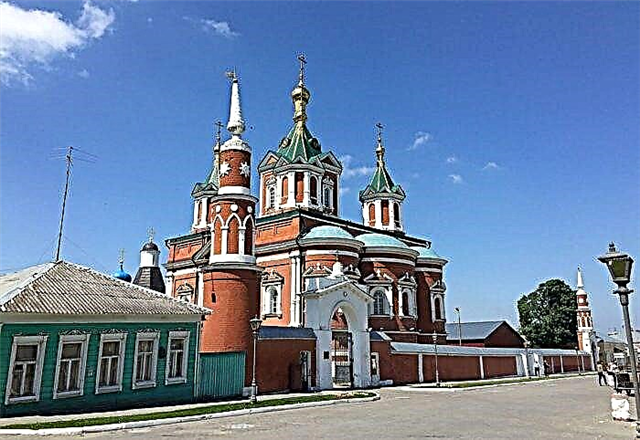
Holy Trinity New Golutvin Monastery
The convent was founded in the 19th century. It occupies the territory of the former bishop's house, buildings of the 17th century - Trinity Church of 1705 and white-stone buildings. To date, in addition to the Trinity Church, the Intercession Church, as well as the bell tower, have been preserved. About 80 people live permanently in the monastery. The sisters conduct excursions around the monastery, work in workshops, and also maintain a kennel with rare breeds of dogs.

Pyatnitsky gate
The preserved front gate in the Kolomna Kremlin. The travel tower at the gate is the only one that has survived. The name of the gate was given because of the nearby church of Paraskeva Pyatnitsa, on the site of which the Pyatnitskaya chapel was later built. Visually, the tower of the Pyatnitsky Gate resembles the Spasskaya Tower in the Moscow Kremlin. The tower has been restored several times and is now in good condition.

Museum Pastila Factory (4 Polyanskaya St.)
It is a large complex - production, laboratory, shop, garden. Previously, the factory was owned by the merchants Chuprikovs - they were the very first in Kolomna who began to produce an unusual sweetness. During the excursion, guests are told all the nuances of making Kolomna marshmallows, introduced to the merchant family of the Chuprikovs. The tour ends with a tea party with tasting of several types of marshmallows according to old recipes.

Museum "Kalachnaya"
The unique museum was opened in 2013. Its opening was preceded by a long and painstaking procedure for restoring the old recipes of Kolomna rolls. According to historical drawings, a special roll stove was restored, which is fired with birch wood. Museum visitors are offered a theatrical excursion with a story about the history of baking, tasting, a master class on kneading dough and making rolls.

Church of St. Nicholas on Posada
One of the oldest churches in Kolomna was founded in the 16th century. Initially, the temple was named in the name of St. Nicholas "Wet". Nikolsky Church in stone was erected at the beginning of the 18th century with donations from parishioners. The temple looks like a typical merchant. It was built in the style of the "Moscow Pattern". Decorations from 105 carved kokoshniks destroyed in the 18th century were restored only in the 1970s. The first tier of the bell tower has been preserved.

The estate of the merchants Lazhechnikovs
Historical monument of the 18th-19th centuries. The writer I.I.Lazhechnikov spent his childhood and youth in the estate. The museum has been located here since 2010 and presents the exhibition "Kolomna of the Past Centuries". Two interactive performances are held for visitors. In the first, the guests get to know the hospitable host Ivan Ivanovich. The second performance introduces the guests to the secrets of making Kolomna marshmallow, which guests are treated to.
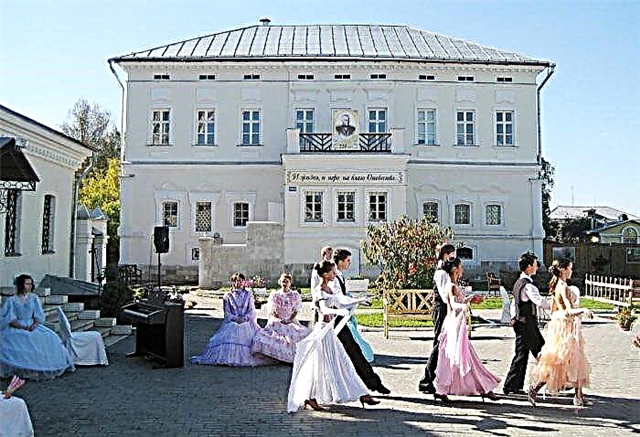
Monument to Dmitry Donskoy
Opened in 2007 in honor of the victory of the Russian troops in the Battle of Kulikovo. Located next to the Round Tower of the Kolomna Kremlin. The author of the project is the architect Sharov, the sculptor is Rukavishnikov. The height of the monument with a pedestal is 12 meters. The bronze sculpture of Donskoy is 5.5 meters high. Dmitry Donskoy is depicted as he enters the battlefield. He rides a horse in full armor, his gaze is firm and resolute.

Skating center "Kolomna"
The sports center was built in 2006. It includes an ice arena and stands for over 6,000 spectators. The arena hosts Russian, European championships, as well as world cups. There is a medical rehabilitation center, a swimming pool with a jacuzzi and a sauna, a gym, a winter garden. There is a museum of skates, a museum of speed skating, and there is a small archaeological exposition. There is a sports school at the center.

Interactive Museum of Kolomna
These are modern interesting museums, where, in addition to examining museum exhibits, you can take part in various master classes and see costumed presentations and performances.
Museum "Blacksmith Sloboda"
Private museum dedicated to blacksmithing and folk crafts. It opened in 2010. The basis of the museum's expositions is a collection of cast, forged and wooden products. Old armor, forged household items, hunting and fishing supplies are on display. There are about 7000 exhibits in the museum's collection. Guests will be able to see the equipped workplace of the blacksmith, learn the features of the life of our ancestors.

Museum workshop "House of Posad crafts"
Here you can see old household items, irons, samovars, gramophones, sewing machines, clothes of the late 19th century. Many things are made by the hands of the masters of the museum. The workshop is located in the house of the bourgeois Makarov, built in the 19th century. Guests can take part in master classes on making clay products, try themselves in the role of a blacksmith and forge a horseshoe or a poker, make a picture of wool or a doll-guardian.

"Secrets of Kolomna Mead"
The museum is located in an outbuilding of a former merchant's mansion.The founders of the museum have restored the premises, including the wine cellars, and recreated the amazing atmosphere of the old era there. The beekeeper and the mead brewer tell the guests the history of Kolomna beekeeping, about the ancient Russian rituals associated with honey. Guests will try to make their own honey sbiten and taste several types of honey.

Museum of Soap "Fragrant Joy"
The museum recreates the atmosphere of a soap shop from the pre-revolutionary period. In the museum, guests immediately feel a bouquet of exquisite aromas, and the guides will tell you about the traditions of Russian soap making, the cosmetic secrets of our ancestors, and will tell you in detail about all stages of soap production. The museum's collections include soaps of original forms, as well as 19th century perfumes. There are master classes and the sale of handmade soap.

Pastry cookery master P. P. Shvedov
The guests of the museum are given a fancy-dress tour of the pastry shop with 19th century interiors. It tells the secrets of making sweets, introduces the original old recipes. The guests will see the process of making sweets in the workshop and will take part in the master class themselves. At the end of the excursion, visitors will have a tea party and tasting of sweets of the factory's own production. There is a gift shop.

The best museums in Kolomna
The most popular and most visited museums in the city, which are definitely worth a visit.
Museum-navigator "Actual antiquities of Kolomna"
An original modern museum of a new format. He talks about the legacy of Kolomna, its past and present. Antiquities help to learn about the traditions of life that existed earlier. Porcelain items of the 1830s, Kolomna money of the XIV century, old fabrics are on display. Also, guests are offered several author's excursion routes around the city, including routes with an audio guide and bicycle excursions.

Kolomna Museum of Local Lore
The museum funds contain both historical and natural exhibits and works of art. Part of the exposition tells the history of the city - about industrial, commercial and military development. Products of Kolomna artisans are exhibited. The collection of the local history museum has about 30,000 exhibits. Every year it is visited by about 60 00 people - this is one of the most visited places in the city among tourists.

Museum "Kolomna gramophone"
It is not by chance that the museum has an original theme. Since 1934, a portable gramophone plant has been operating in Kolomna, and its products were popular throughout the country. The extensive museum collection contains not only gramophones, but also music boxes, gramophones, phonographs. The guides will tell you about the history of musical development, the features of the models presented, and will give you the opportunity to listen to recordings on various media.

Museum-estate "House of the samovar"
A private museum based on the Drilling collection. In their unique collection there are about 400 samovars of different shapes and sizes. There is also a small exhibition of ancient household items - irons, kerosene lamps, dishes. There is a reconstruction of an old Russian stove. In the souvenir shop you can buy small samovars, gingerbread cookies, honey, sweets. The museum has a guest house for 17 guests and a cafe.

Cultural center "House of Ozerov"
Located in a building that is an architectural monument of the 18th century in the classicism style. This is a former merchant's mansion, which now houses temporary exhibitions on various topics. Since its foundation in the 1980s, more than 800 exhibitions have been held. Three halls house works of graphics, painting, sculpture, folk art, photography. Concerts are often held in halls with excellent acoustics.

Museum of Flax and Russian Woman's Life
Located in the museum quarter of the historical part of the city. During the excursion, guests are told the history of flax, the peculiarities of its production, about the work of the weaving machine, spinning wheel and yarn making. You can see linen products - shirts, tablecloths, towels. One of the expositions shows the everyday life of peasant life in the 19th century among the interiors stylized as a Russian hut. You can take a photo in an old costume.

Private Gallery "Museum of Favorite Toys"
Has been working since 2014. The founder of the gallery is the needlewoman Irina Kulikova, who makes Teddy bears herself and is engaged in the restoration of old toys. The collection of the museum includes board games, soft toys, toy soldiers, and a children's railway. There are especially many dolls in the museum - they were brought from different countries. There are porcelain, papier-mâché, vinyl, terracotta, and plastic dolls.

Museum-residence “Artkommunalka. Erofeev and Others "
An unusual museum showing the life of a communal apartment. The former tenants of the apartment called the long corridor "Kolomensky Arbat". The museum keeps the spirit of the Soviet "communal apartment" and dissidence. In the gallery-workshop, contemporary artists create, whose works are exhibited in the residence. They create creative works of various formats that become part of the culture of modern Kolomna. The founder of the museum is the writer Erofeev.
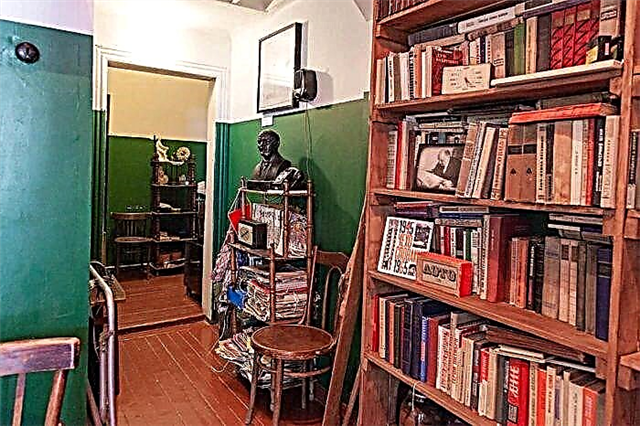
Tram Museum
Opened in 2016. The initiator of the creation of the museum is the collector Andrey Myasnikov. He founded a museum in Kolomna, because it was in this city that the country's first electric tram was assembled. Myasnikov collected about 200 models of trams from different countries - England, USA, Germany. They show the history of the development of electric transport in Russia and in other countries. The collection of the museum contains archival documents and photographs.

Museum of Military Glory
It is located in the territory of the Memorial Park. He has been working since 2010. The museum's exhibitions are dedicated to the history of military affairs in Kolomna from the Middle Ages to the present day. Among the exhibits of the museum there are also items from the private archives of city residents. An electronic memory book is located in one of the halls. Of particular interest is the diorama showing the 82mm mortar, the drawings of which were made at the Kolomna Engineering Bureau.

Places of worship and sights
The most famous churches and temples of the city. Famous Orthodox cathedrals and monasteries of Kolomna.
Church of the Resurrection of the Word
Refers to the Assumption Cathedral. An ancient temple, the exact date of its foundation is unknown. In the annals there is an entry about the wedding in the temple of Prince Dmitry Donskoy and Princess Evdokia of Suzdal in 1366 - this date is considered to be the beginning of the history of the temple. It was repeatedly rebuilt, after it was closed in 1929, the bell tower, the fence, and the head were destroyed near the ancient temple. In 2003, the restoration of the temple began.

Church of St. Nicholas Gostiny
Built in 1501. It was rebuilt in 1848 in the pseudo-Russian style with some elements of classicism and has survived to this day. The bell tower with 6 bells lost its upper tier during the Soviet era. The temple was intended for "guests" - merchants engaged in international trade. Since 1509, one of the main shrines of the church has survived - the Gospel, written specially by order of the priest P. Nikolsky.

John the Baptist Church
Orthodox church. Its foundation is considered one of the oldest buildings in the Moscow region. The walls of the quadrangle made of roughly hewn white stone have survived to this day from the 14th century. In the 16th century, the upper part of the building was rebuilt using smoothly hewn stone and brick. The hipped bell tower appeared in 1780. The church building is crowned with a belfry. A block with a carved image of a mythical beast has survived from the 16th century.

Trinity Church in Shchurov
The church in the historic district of the city was built at the beginning of the 20th century. Earlier, in the 18th century, there was a wooden church built by Princess Golitsyna on this site. The stone church of the Holy Trinity was erected at the expense of the owner of the Lipgard cement factory, merchants and manufacturers. In 1991, the church was returned to believers, after a long desolation in Soviet times, its restoration began.

Church of St. John the Evangelist
Located on the Two Revolutions Square.Previously, a wooden church with this name was located at the gates of the Kremlin. After a fire that destroyed a wooden church, a decision was made to build a stone building. Its construction was completed in 1756. By 1828, work on the rebuilding of the church was completed, as well as the painting of the walls. In the middle of the 18th century, a high bell tower was erected in the Empire style. Its height is 67 meters.

Church of the Epiphany in Gonchary
The Orthodox Church, which was a cathedral church from the 1940s to the 1980s. This is the only church in Kolomna that was not closed during the Soviet era. It contains relics and shrines. The old church was founded in the 16th century and until 1680 was called the Church of the Savior Not Made by Hands. At the beginning of the 19th century, the church was rebuilt in the classicism style, with a bell tower, a refectory and two side chapels.

Staro-Golutvin monastery
The monastery is located on the outskirts of Kolomna. It was founded in the XIV century. It is believed that the first abbot of the monastery was a student of Sergei Radonezhsky. Remnants of the original foundation can still be seen in the basement of the Epiphany Church of the 18th century - now the oldest on the territory of the monastery. In the 16th century, the well-being and importance of the monastery increased greatly. It was visited by the Grand Dukes Ivan III and Ivan the Terrible.
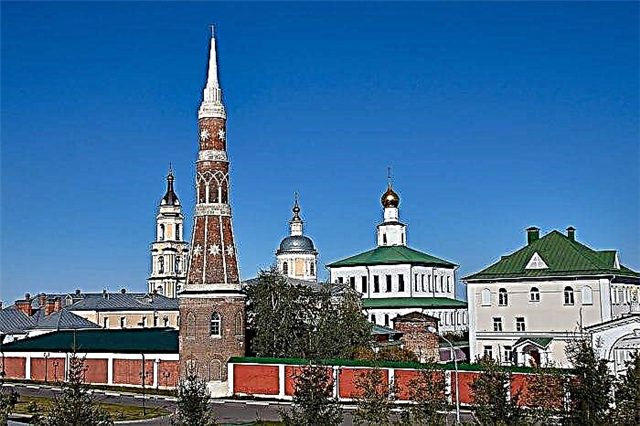
The best parks and squares of Kolomna
The most beautiful places for relaxation and outdoor walks.
Square Platter
Located on the territory of the Kremlin. It is considered the most ancient place in Kolomna. Excavations have confirmed the presence of an ancient settlement at this place, from which the development of the city began. Scientists attribute the ancient settlement to the Iron Age. On the site of the park there were defensive fortifications. Now the square is a place for walking for the townspeople. Its unusual name appeared in the 19th century due to its round shape.

Memorial park
It is located in the central part of the city on the site of the Peter and Paul Cemetery. In wartime, this part of the city was used for mass graves of those killed at the front and those who died in the Kolomna hospital. In 1970, a Memorial Park was opened at this place, the Eternal Flame was installed. On the Alley of Military Glory, there are monuments to the Koloment heroes who died in World War II, as well as those who took part in local conflicts.

Peace park
One of the main cultural and leisure places in Kolomna. The park was opened in 1948. It occupies a large area with green areas, alleys, footpaths, lanterns. There are rides in the park. Especially interesting is the 26-meter-high Ferris wheel, which offers an excellent view of the city. There are cafes and stalls selling ice cream and cotton candy. There is a large fountain in the center of the park.

City monuments and sculptures
The most famous and interesting monuments and monuments in Kolomna.
Monument to Water Carrier
The sculpture was opened in 2012 in the place where water carriers drew water from the Moskva River to deliver it to Kolomna. They sold water in buckets - two kopecks for one bucket. With the advent of the water supply system, the profession of a water carrier has become irrelevant. The sculpture is designed to perpetuate the memory of this difficult profession. The water carrier is shown next to the barrel. The author of the sculpture, the blacksmith Yakushev, gave his face features of similarity to the TV presenter Yakubovich.

Shevlyaginskaya basin
A monument to the historical water supply system, which appeared in Kolomna at the beginning of the 20th century. It is a copy of the column, the view of which has been recreated according to pre-revolutionary drawings. Its body has 8 sides and is decorated with carvings of flowers. About 72,000 buckets of water passed through such a column per day. The monument to the basin was opened in 2013 on the square of five corners. The column is active, and is connected to the water supply.

Monument to the Fighters of Two Revolutions
Opened in 1958 on the site of a mass grave. In 1918, people who died during the riots at the end of 1917 were buried here. 10 years later, 26 victims of the 1905 punitive measures were reburied here. In 1957, the remains of a high school student Vanya Markov, who died in 1905, were placed in a common mass grave. The monument is a white obelisk with 30 names of the victims of both revolutions on the tablet.

Monument to steam locomotive L-0012
The monument to the first main-line freight steam locomotive built in Kolomna is located next to the railway station. This model was one of the best in the country. Since 1945, about 4000 such locomotives have been produced within 10 years. Designers-developers received the Stalin Prize for the steam locomotive project. The letter "L" in the title means the surname of one of the creators of the project - Lebedyansky.

Flood water level scale
The original structure is located at the monument to Vodovoz. Outwardly, the scale is made gracefully and resembles the open pages of a book. A decorative and artistically designed scale shows the level of the highest flood water values in different years. In spring, the Moscow River often overflows its banks and floods the coastal area. It can be seen from the scale data that in 2010 and 2011 flood water almost completely hid the area.

Attractions in the vicinity of Kolomna
Interesting places near the city, where you can go on weekends by car.
Bobrenev monastery
Monastery 3 km from Kolomna. The date of foundation is considered to be 1578, but the exact time and circumstances of its construction are unknown. In the 17th-18th centuries, stone cathedrals and churches, outbuildings appeared on the territory of the monastery. Currently, many buildings of the monastery have been restored, including the Church of the Nativity of the Virgin of 1790, which has unique acoustics.

Nikolai Abakumtsev Museum-Workshop
It is located in a picturesque place in the village of Peski, 21 km from Kolomna. The sculptures of the master are located both in the exhibition hall and in the open air among the century-old pines. A tour of the museum acquaints visitors not only with the works of Abakumtsev, but also with all stages of making sculptures, starting with the development of a sketch. On the terrace of the museum you can drink tea with pine cones and herbs from a samovar.

Contact zoo "Gorki"
Founded on the basis of the Maksheevsky farm. The territory was refurbished and landscaped, the animal enclosures were made more comfortable. In the petting zoo, you can not only look at the animals, but also feed and play with them. Here live ostriches, ponies, peacocks, buffalo, llamas, camel, yak - about 50 species of birds and animals. Visitors, especially children, are most interested in the "animal families" where there are cubs.






